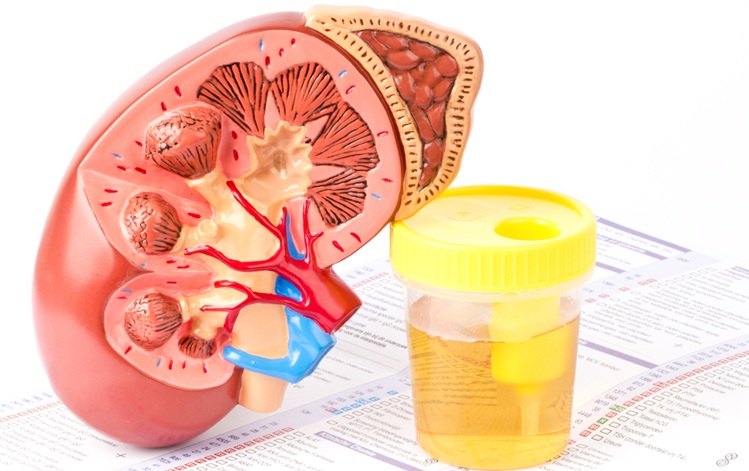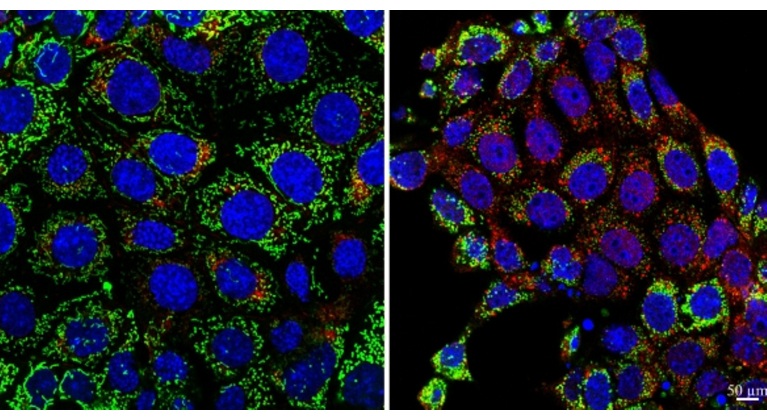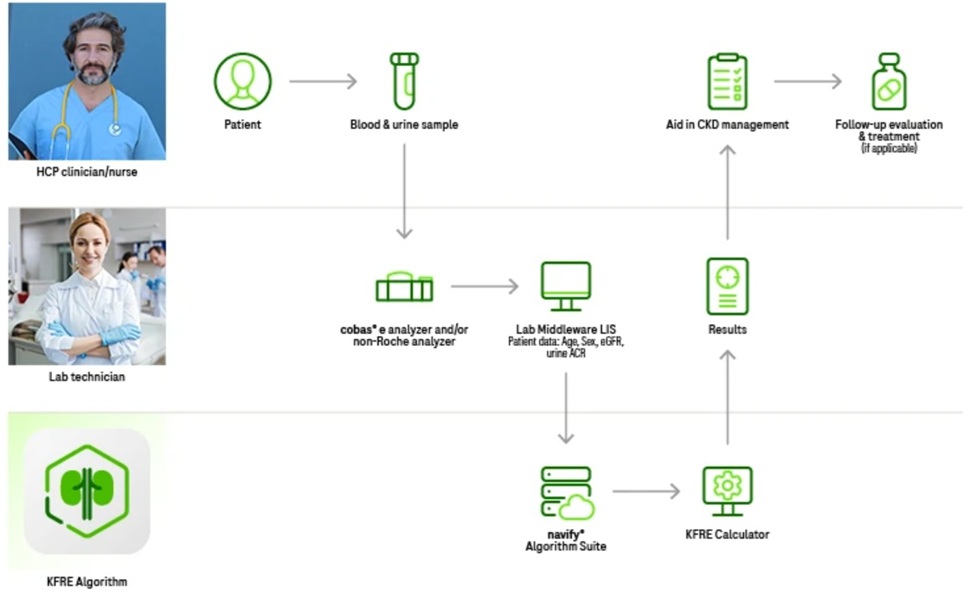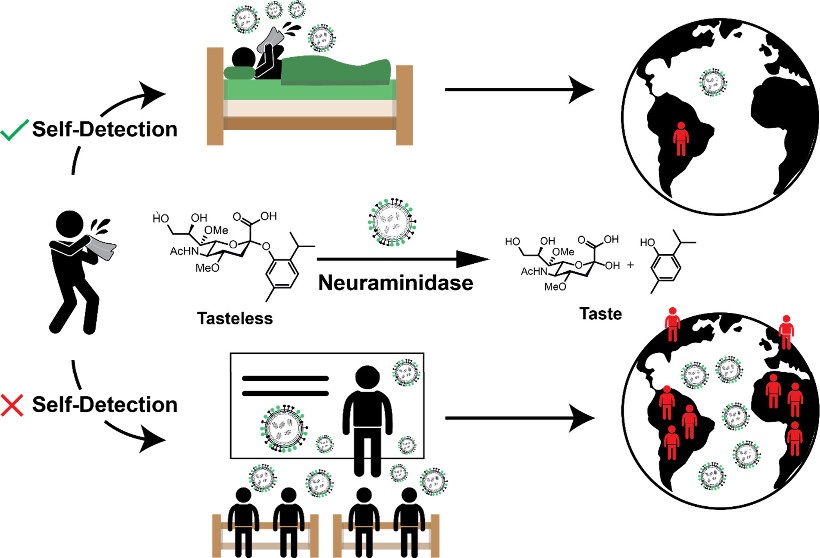New Flow Control Technology Turns Simple COVID-19 Dipstick Tests into Complex Biomedical Assays
|
By LabMedica International staff writers Posted on 19 Oct 2021 |

A team of researchers attempting to overcome the limitations of dipsticks have developed a flow control technology that can turn these simple tests into complex biomedical assays.
The researchers at the Georgia Institute of Technology (Atlanta, GA, USA) have applied the new technology in a toolkit to diagnose the novel coronavirus, as well as influenza. Lateral flow assays - LFAs, often called ‘dipsticks’ - have been a standard point-of-care testing platform for decades, and keep growing in popularity, especially in developing countries. These disposable, paper-based diagnostic devices are affordable, widely available, have a long shelf life, and they’re fast, typically delivering test results in less than 20 minutes. They’re also easy to use at home. The user adds a few drops of a sample - saliva, blood, or urine, for instance - to one end of the dipstick, and within minutes reads the results at the other end.
The technology has been widely used to determine the presence or absence of biomarkers in humans, as well as contaminants in water or food. Most commonly, LFA technology is used for at-home pregnancy tests. And more recently, LFA technology has been used successfully in at-home tests for COVID-19. Recognizing the widespread popularity and practicality of dipsticks, particularly in resource-limited settings, the research team are overcoming those limitations with development of a flow control technology, turning these simple tests into complex biomedical assays.
LFAs utilize capillary liquid flow to detect analytes - capillary flow is the process of liquid passing through a narrow passageway (like a capillary); analytes are substances or chemicals of interest, such as an antibodies or proteins, in an analytical procedure (like an LFA). According to the researchers, conventional LFAs are not practical for performing multi-step assays - capillary flow prevents them from coordinating a complex process that includes the application of multiple reagents in a specific sequence with specific delays in between. In their recently published studies, the team describes a technique to control capillary flow by imprinting roadblocks on a laminated paper with water insoluble ink. The blocked liquid flow is thus manipulated into a void formed at the interface of the ink-infused paper and the polymer tape laminate. By modifying the roadblocks, the researchers can essentially set the time it takes for a void to form - creating timers that hold capillary flow for a desired period.
For the user, the new dipstick test works the same way as the reliable standard - a sample is added at one end and the results present themselves minutes later in living color(s) at the other end. The researchers have simply enhanced and expanded the process in between. Basically, they drew patterns on paper - a dipstick - and created immunoassays that rival other diagnostic tests requiring labs and extra equipment, in the effective detection of pathogenic targets like Zika virus, HIV, hepatitis B virus, or malaria, among others.
The researchers also tested a PCR-based point-of-care toolkit based on the lab’s flow technology. The assay is programmed to run a sequence of chemical reactions to detect SARS-CoV-2 (severe respiratory syndrome-coronavirus 2) and/or influenza A and influenza B. A traditionally labor-intensive genetic assay can now be done on a disposable platform which will enable frequent, on-demand self-testing, thereby filling a critical need to track and contain outbreaks. The team is studying the technology’s application for other assays targeting other pathogens, with plans to publish in the coming months. The researchers are optimistic that the work will have implications in the current healthcare challenge with COVID-19, and beyond.
“We believe this flow technology research will have widespread impact,” said engineering researcher Fatih Sarioglu, who runs the Biomedical Microsystems Laboratory at the Georgia Institute of Technology. “This kind of dipstick test is so commonly used by the public for biomedical testing, and now it can be translated into other applications that we do not traditionally consider to be cut out for these simple tests.”
Related Links:
Georgia Institute of Technology
Latest Immunology News
- Signature Genes Predict T-Cell Expansion in Cancer Immunotherapy
- Molecular Microscope Diagnostic System Assesses Lung Transplant Rejection
- Blood Test Tracks Treatment Resistance in High-Grade Serous Ovarian Cancer
- Luminescent Probe Measures Immune Cell Activity in Real Time
- Blood-Based Immune Cell Signatures Could Guide Treatment Decisions for Critically Ill Patients
- Novel Tool Predicts Most Effective Multiple Sclerosis Medication for Patients
- Companion Diagnostic Test for CRC Patients Identifies Eligible Treatment Population
- Novel Tool Uses Deep Learning for Precision Cancer Therapy
- Companion Diagnostic Test Identifies HER2-Ultralow Breast Cancer and Biliary Tract Cancer Patients
- Novel Multiplex Assay Supports Diagnosis of Autoimmune Vasculitis
- Blood Test Predicts Immunotherapy Efficacy in Triple-Negative Breast Cancer
- Simple Genetic Testing Could Predict Treatment Success in Multiple Sclerosis Patients
- Novel Gene Signature Predicts Immunotherapy Response in Advanced Kidney Cancers
- New Technology Deciphers Immune Cell Communication to Predict Immunotherapy Response
- AI Model Accurately Predicts MSI Tumor and Immune Checkpoint Inhibitor Responsiveness
- Precision Tool Predicts Immunotherapy Treatment Failure in Melanoma Patients
Channels
Clinical Chemistry
view channel
VOCs Show Promise for Early Multi-Cancer Detection
Early cancer detection is critical to improving survival rates, but most current screening methods focus on individual cancer types and often involve invasive procedures. This makes it difficult to identify... Read more
Portable Raman Spectroscopy Offers Cost-Effective Kidney Disease Diagnosis at POC
Kidney disease is typically diagnosed through blood or urine tests, often when patients present with symptoms such as blood in urine, shortness of breath, or weight loss. While these tests are common,... Read moreMolecular Diagnostics
view channel
Urine Test Could Replace Painful Kidney Biopsies for Lupus Patients
Lupus is an autoimmune disorder that causes the immune system to attack the body’s own tissues and organs. Among the five million people living with lupus globally, nearly half develop lupus nephritis,... Read more
Blood Test Guides Post-Surgical Immunotherapy for Muscle-Invasive Bladder Cancer
After surgery for muscle-invasive bladder cancer, many patients face uncertainty about whether residual cancer cells remain in their bodies. Now, a new international phase 3 study has demonstrated that... Read more
Mitochondrial DNA Mutations from Kidney Stressors Could Predict Future Organ Decline
Kidney-related diseases are alarmingly common: chronic kidney disease (CKD) affects more than one in seven U.S. adults, while about 20% of hospitalized adults are diagnosed with acute kidney injury (AKI).... Read moreHematology
view channel
Viscoelastic Testing Could Improve Treatment of Maternal Hemorrhage
Postpartum hemorrhage, severe bleeding after childbirth, remains one of the leading causes of maternal mortality worldwide, yet many of these deaths are preventable. Standard care can be hindered by delays... Read more
Pioneering Model Measures Radiation Exposure in Blood for Precise Cancer Treatments
Scientists have long focused on protecting organs near tumors during radiotherapy, but blood — a vital, circulating tissue — has largely been excluded from dose calculations. Each blood cell passing through... Read more
Platelets Could Improve Early and Minimally Invasive Detection of Cancer
Platelets are widely recognized for their role in blood clotting and scab formation, but they also play a crucial role in immune defense by detecting pathogens and recruiting immune cells.... Read more
Portable and Disposable Device Obtains Platelet-Rich Plasma Without Complex Equipment
Platelet-rich plasma (PRP) plays a crucial role in regenerative medicine due to its ability to accelerate healing and repair tissue. However, obtaining PRP traditionally requires expensive centrifugation... Read moreImmunology
view channel
Signature Genes Predict T-Cell Expansion in Cancer Immunotherapy
Modern cancer immunotherapies rely on the ability of CD8⁺ T cells to rapidly multiply within tumors, generating the immune force needed to eliminate cancer cells. However, the biological triggers behind... Read more
Molecular Microscope Diagnostic System Assesses Lung Transplant Rejection
Lung transplant recipients face a significant risk of rejection and often require routine biopsies to monitor graft health, yet assessing the same biopsy sample can be highly inconsistent among pathologists.... Read moreMicrobiology
view channel
Fast Noninvasive Bedside Test Uses Sugar Fingerprint to Detect Fungal Infections
Candida bloodstream infections are a growing global health threat, causing an estimated 6 million cases and 3.8 million deaths annually. Hospitals are particularly vulnerable, as weakened patients after... Read more
Rapid Sepsis Diagnostic Device to Enable Personalized Critical Care for ICU Patients
Sepsis is a life-threatening condition that occurs when the body’s response to infection spirals out of control, damaging organs and leading to critical illness. Patients often arrive at intensive care... Read morePathology
view channel
Tears Offer Noninvasive Alternative for Diagnosing Neurodegenerative Diseases
Diagnosing and monitoring eye and neurodegenerative diseases often requires invasive procedures to access ocular fluids. Ocular fluids like aqueous humor and vitreous humor contain valuable molecular information... Read more
AI-Powered Method Combines Blood Data to Accurately Measure Biological Age
Chronological age tells us how many years we’ve lived, but not how quickly our bodies are ageing. Some people stay healthy well into their 80s or 90s, while others experience decline much earlier.... Read moreTechnology
view channel
Viral Biosensor Test Simultaneously Detects Hepatitis and HIV
Globally, over 300 million people live with Hepatitis B and C, and 40 million with HIV, according to WHO estimates. Diagnosing bloodborne viruses such as HIV and Hepatitis B and C remains challenging in... Read more
Acoustofluidic Device to Transform Point-Of-Care sEV-Based Diagnostics
Rapid and sensitive detection of small extracellular vesicles (sEVs)—key biomarkers in cancer and organ health monitoring—remains challenging due to the need for multiple preprocessing steps and bulky... Read moreIndustry
view channel
Advanced Instruments Merged Under Nova Biomedical Name
Advanced Instruments (Norwood, MA, USA) and Nova Biomedical (Waltham, MA, USA) are now officially doing business under a single, unified brand. This transformation is expected to deliver greater value... Read more






















